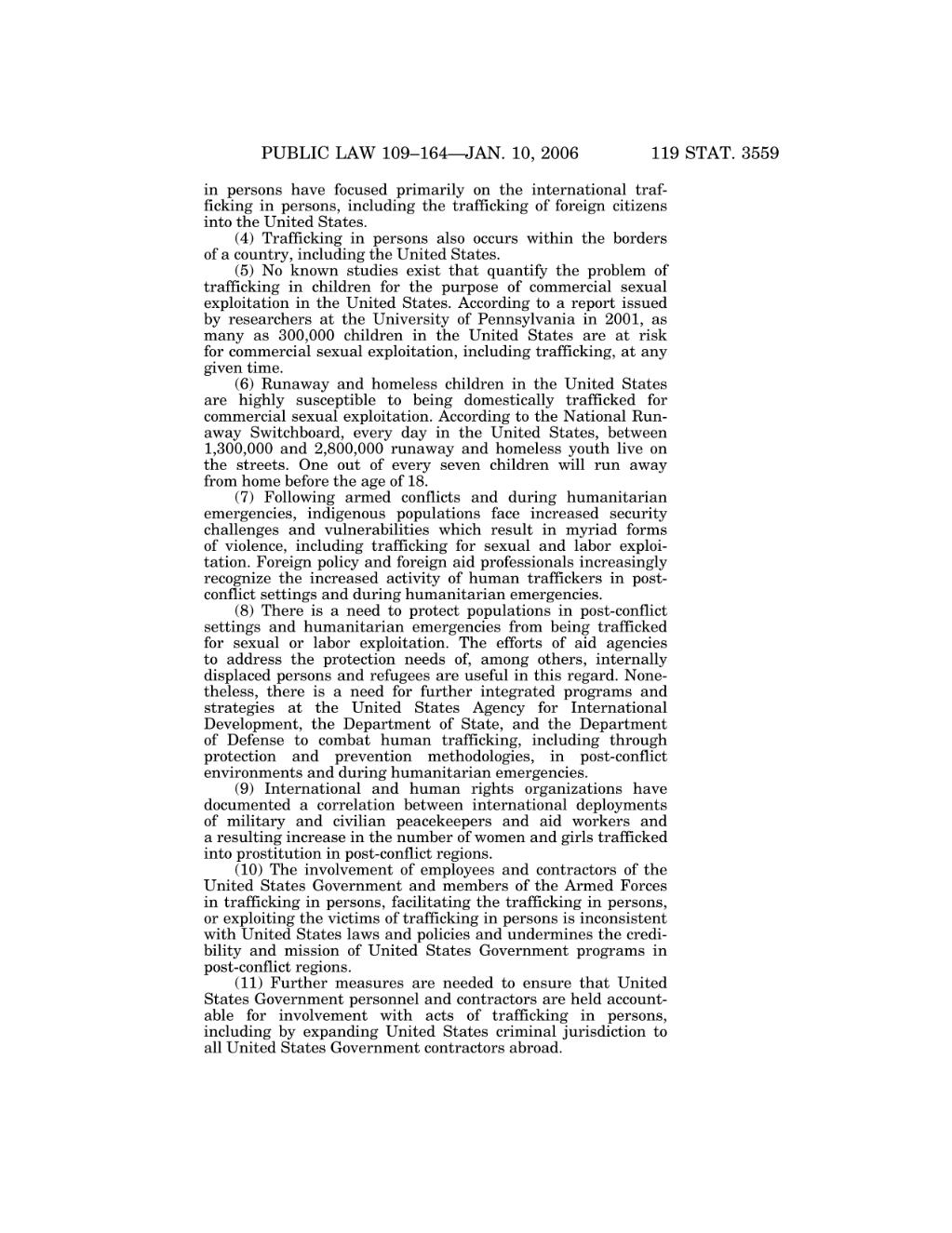PUBLIC LAW 109–164—JAN. 10, 2006
119 STAT. 3559
in persons have focused primarily on the international trafficking in persons, including the trafficking of foreign citizens into the United States. (4) Trafficking in persons also occurs within the borders of a country, including the United States. (5) No known studies exist that quantify the problem of trafficking in children for the purpose of commercial sexual exploitation in the United States. According to a report issued by researchers at the University of Pennsylvania in 2001, as many as 300,000 children in the United States are at risk for commercial sexual exploitation, including trafficking, at any given time. (6) Runaway and homeless children in the United States are highly susceptible to being domestically trafficked for commercial sexual exploitation. According to the National Runaway Switchboard, every day in the United States, between 1,300,000 and 2,800,000 runaway and homeless youth live on the streets. One out of every seven children will run away from home before the age of 18. (7) Following armed conflicts and during humanitarian emergencies, indigenous populations face increased security challenges and vulnerabilities which result in myriad forms of violence, including trafficking for sexual and labor exploitation. Foreign policy and foreign aid professionals increasingly recognize the increased activity of human traffickers in postconflict settings and during humanitarian emergencies. (8) There is a need to protect populations in post-conflict settings and humanitarian emergencies from being trafficked for sexual or labor exploitation. The efforts of aid agencies to address the protection needs of, among others, internally displaced persons and refugees are useful in this regard. Nonetheless, there is a need for further integrated programs and strategies at the United States Agency for International Development, the Department of State, and the Department of Defense to combat human trafficking, including through protection and prevention methodologies, in post-conflict environments and during humanitarian emergencies. (9) International and human rights organizations have documented a correlation between international deployments of military and civilian peacekeepers and aid workers and a resulting increase in the number of women and girls trafficked into prostitution in post-conflict regions. (10) The involvement of employees and contractors of the United States Government and members of the Armed Forces in trafficking in persons, facilitating the trafficking in persons, or exploiting the victims of trafficking in persons is inconsistent with United States laws and policies and undermines the credibility and mission of United States Government programs in post-conflict regions. (11) Further measures are needed to ensure that United States Government personnel and contractors are held accountable for involvement with acts of trafficking in persons, including by expanding United States criminal jurisdiction to all United States Government contractors abroad.
VerDate 14-DEC-2004
07:21 Oct 30, 2006
Jkt 039194
PO 00003
Frm 01027
Fmt 6580
Sfmt 6581
E:\PUBLAW\PUBL003.119
APPS06
PsN: PUBL003
�
